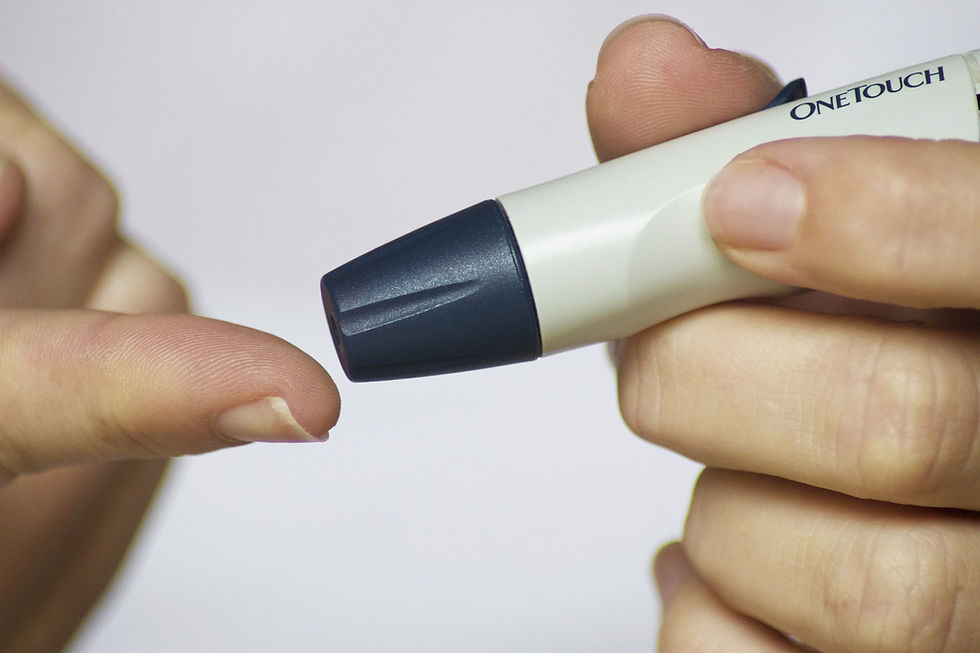Types of Diabetes and Diabetes Mellitus- Prevention and Cure
- Dr. Shachin K. Gupta

- Jun 16, 2023
- 3 min read
Diabetes mellitus is a chronic health condition that affects how your body turns food into energy. There are two main types of diabetes:
Type 1 diabetes is an autoimmune disease. The body's immune system attacks and destroys cells in the pancreas, where insulin is made. Insulin is a hormone that helps glucose from food get into your cells to give them energy.
Type 2 diabetes occurs when your body becomes resistant to insulin, and sugar builds up in your blood.

In both type 1 and type 2 diabetes, having too much sugar in your blood can lead to serious health problems, such as heart disease, stroke, blindness, kidney disease, and nerve damage.
Type 1 diabetes- Type 1 diabetes is an autoimmune disease. This means that your body's immune system attacks and destroys cells in your pancreas, where insulin is made. The exact cause of type 1 diabetes is unknown, but it is thought to be a combination of genetic and environmental factors. Type 1 diabetes is not preventable, but it can be managed with insulin therapy, diet, and exercise.
"Did you know that type 1 diabetes is an autoimmune disease? Learn more about this chronic condition using the hashtag #type1diabetes."
Type 2 diabetes- Type 2 diabetes is the most common type of diabetes. It occurs when your body becomes resistant to insulin, and sugar builds up in your blood. Type 2 diabetes is often caused by a combination of factors, including:
Age. The risk of developing type 2 diabetes increases as you get older.
Family history. If you have a family history of type 2 diabetes, you are at an increased risk of developing the disease.
Weight. Being overweight or obese is a major risk factor for type 2 diabetes.
Physical activity. Lack of physical activity increases your risk of developing type 2 diabetes.
Race/ethnicity. African Americans, Hispanic Americans, American Indians, and Alaska Natives are at a higher risk of developing type 2 diabetes than Caucasian Americans.
Type 2 diabetes can be prevented or delayed by maintaining a healthy weight, eating a healthy diet, and being physically active.
"Type 2 diabetes is the most common type of diabetes. Find out how to prevent or delay it using the hashtag #diabetesprevention."
Symptoms of diabetes The symptoms of diabetes can vary depending on the type of diabetes you have. The most common symptoms of type 1 diabetes include:
Frequent urination
Excessive thirst
Unexplained weight loss
Extreme fatigue
Blurred vision
Slow-healing sores
The symptoms of type 2 diabetes may be less noticeable, especially in the early stages. Some people with type 2 diabetes may not have any symptoms at all.
Complications of diabetes Diabetes can lead to a number of serious health complications, including:
Heart disease
Stroke
Eye problems, including blindness
Kidney disease
Nerve damage
Amputation
Premature death
Treatment for diabetes: The goal of treatment for diabetes is to keep your blood sugar levels as close to normal as possible. This can help prevent or delay the development of serious health complications. The treatment for type 1 diabetes and type 2 diabetes is different.
Treatment for type 1 diabetes: The only way to treat type 1 diabetes is with insulin therapy. Insulin is a hormone that helps glucose from food get into your cells to give them energy. People with type 1 diabetes need to take insulin injections several times a day. They also need to monitor their blood sugar levels closely and make adjustments to their insulin dose as needed.
Treatment for type 2 diabetes: Type 2 diabetes can often be managed with lifestyle changes, such as losing weight, eating a healthy diet, and being physically active. If lifestyle changes are not enough to control your blood sugar levels, you may need to take medication. There are a number of different types of medications available to treat type 2 diabetes.
Living with diabetes: Living with diabetes can be challenging, but it is possible to live a full and active life. With careful management, you can prevent or delay the development of serious health complications.
"Living with diabetes can be challenging, but it is possible to live a full and active life. Find support and resources using the hashtag #diabetescommunity."
Here are some tips for living with diabetes:
Get regular checkups. Your doctor will monitor your blood sugar levels and make sure that your treatment plan is working.
Take your medications as prescribed. Do not skip doses or change your dose without talking to your doctor.
Monitor your blood sugar levels. This will help you track how your diabetes is being controlled and make adjustments to your treatment plan as needed.
Eat a healthy diet. A healthy diet can help you control your blood sugar levels and reduce your risk of developing serious health complications.
Be physically active.
#diabetesmellitus #diabetesawareness #diabetesmanagement #livingwithdiabetes #diabetestreatment #diabetesresearch #diabetescommunity







Comments